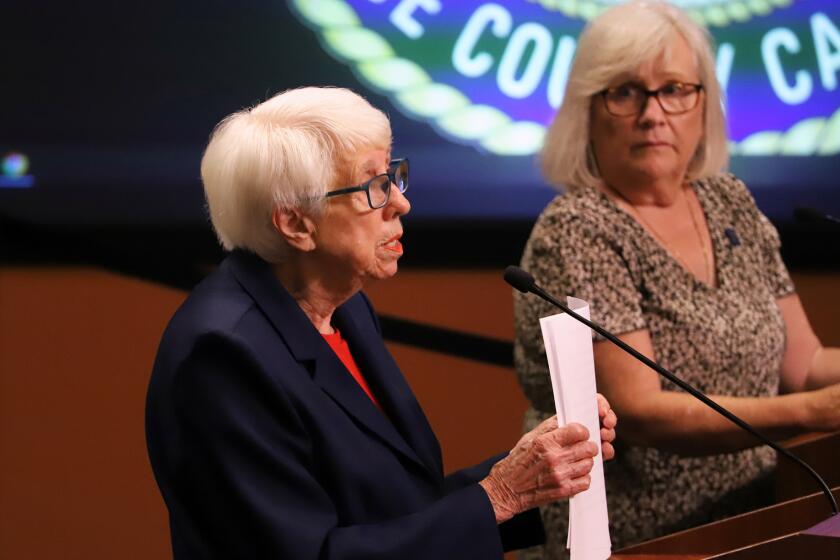Newport-Mesa steps up student attendance tracking to fight chronic absenteeism
The Newport-Mesa Unified School District is doubling down on tracking student attendance to fall in line with the California Department of Education’s addition of chronic absenteeism to its dashboard of accountability, which measures how school districts are performing.
The district has always tracked attendance and notified parents if their children are absent. But Phil D’Agostino, district director of student and community services, said letters also are now being sent.
D’Agostino said the letters help create a paper trail that administrators can use to have conversations with parents, teachers and students. Some parents already have reached out to the district, asking for resources, he said.
He suggests parents look into Attendance Works, a nonprofit that provides online information on how families can build positive habits for good attendance.
“Reaction is the desired effect,” said D’Agostino, who was once a teacher at Newport Harbor High School and principal at Costa Mesa and Estancia high schools. “Parents are the primary educators of their children. We have them for six hours a day and they have them for 17 hours a day. We need their guidance and mentoring to make successful students.”
The state Department of Education defines a chronic absentee as a student who is “absent on 10% or more of the school days in the school year.”
If a student develops a pattern of absences that aren’t cleared by the parents or the school, it can lead to intervention by the district’s student attendance review board, which investigates such problems, helps provide resources to parents and, if necessary, refers families to the Orange County district attorney’s office truancy unit.
Parents of 900 students who missed at least three days of school in the first 30 days of the academic year have received letters so far. Two more rounds of letters will be sent by the end of the year, the district said.
“With 22,000 students [in the] district across 32 schools, I think we’re doing OK,” D’Agostino said. “That’s 4% of our student population that has at least three full-day absences, so 96% of students over 30 days had better than 90% or above attendance.”
Newport-Mesa board President Karen Yelsey said the district is acting because it understands the importance of students being in the classroom for education.
“We want to make sure students and parents are cognizant of what happens when they continuously miss even single periods every day,” Yelsey said. “It’s a good policy, and I don’t think we’ll get a lot of pushback.”
Legislation authored by state Assemblyman Patrick O’Donnell (D-Long Beach) and approved by Gov. Jerry Brown in 2016 expanded the duties of attendance supervisors.
They now include providing support services such as conferences between school staff and parents; promoting extracurricular activities that can increase students’ connection to school, such as tutoring and athletics; recognizing students with excellent attendance records; and collaborating with child welfare services, law enforcement or public healthcare agencies.
About 7.5 million students are chronically absent each year, and they are less likely to succeed and more likely to drop out, according to a 2015 report by the U.S. Department of Justice.
Newport-Mesa last year debuted an in-house program that helps administrators monitor in real time why students are absent and whether they’re excused, D’Agostino said.
If a student has a lot of excused absences and very few unexcused ones, illness or permissive parents may be an issue that may require the district to “dig deeper” and help get students to school more often, he said.
Britt Dowdy, president of the district teachers union, said students who are chronic absentees need “increased social and emotional support.”
“Sometimes parents don’t know how to support or motivate their kid, and it gets really complicated,” Dowdy said. “It’s a case-by-case thing and it’s time-intensive for [district] staff to give a lot of help in support of those people.
“It’s bigger than the school district’s problem.”
Twitter: @vegapriscella
All the latest on Orange County from Orange County.
Get our free TimesOC newsletter.
You may occasionally receive promotional content from the Daily Pilot.




